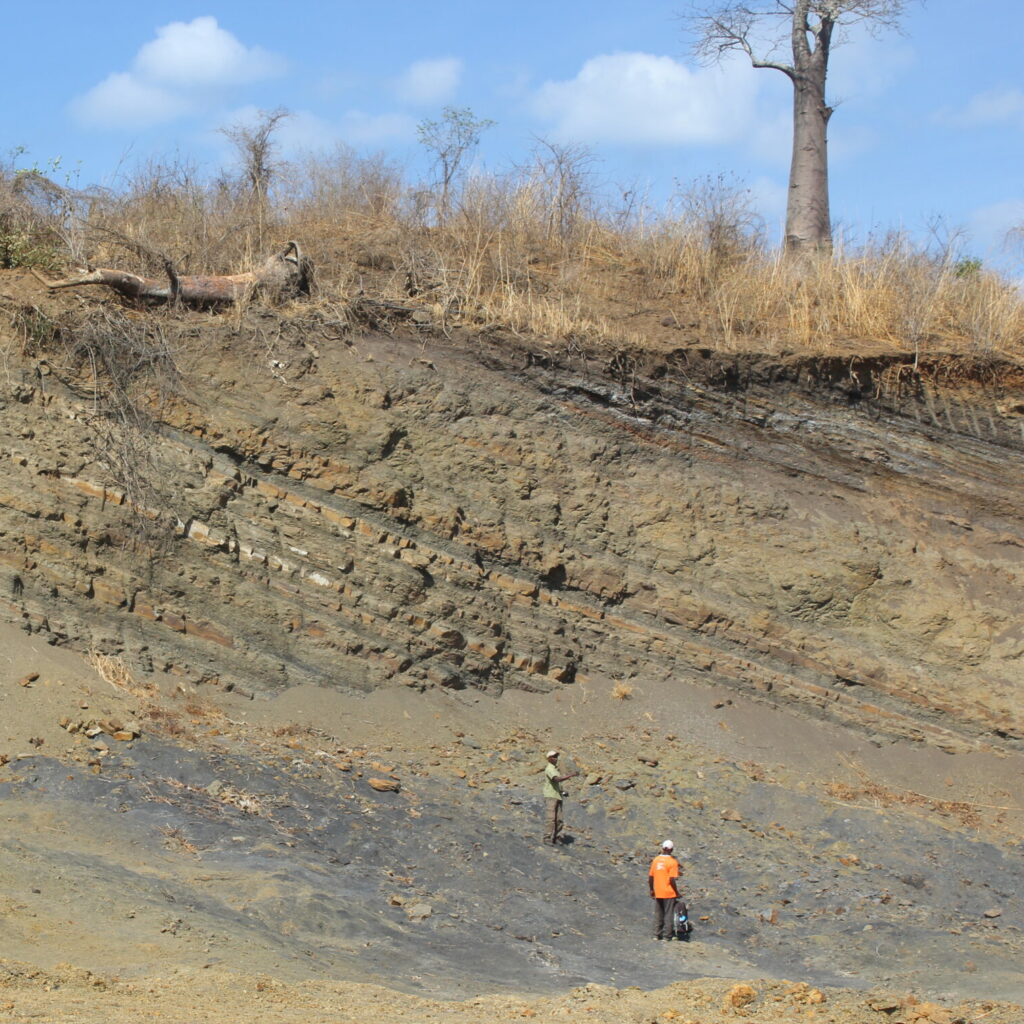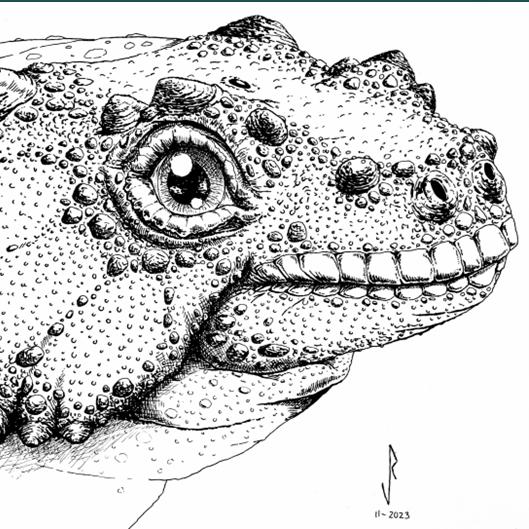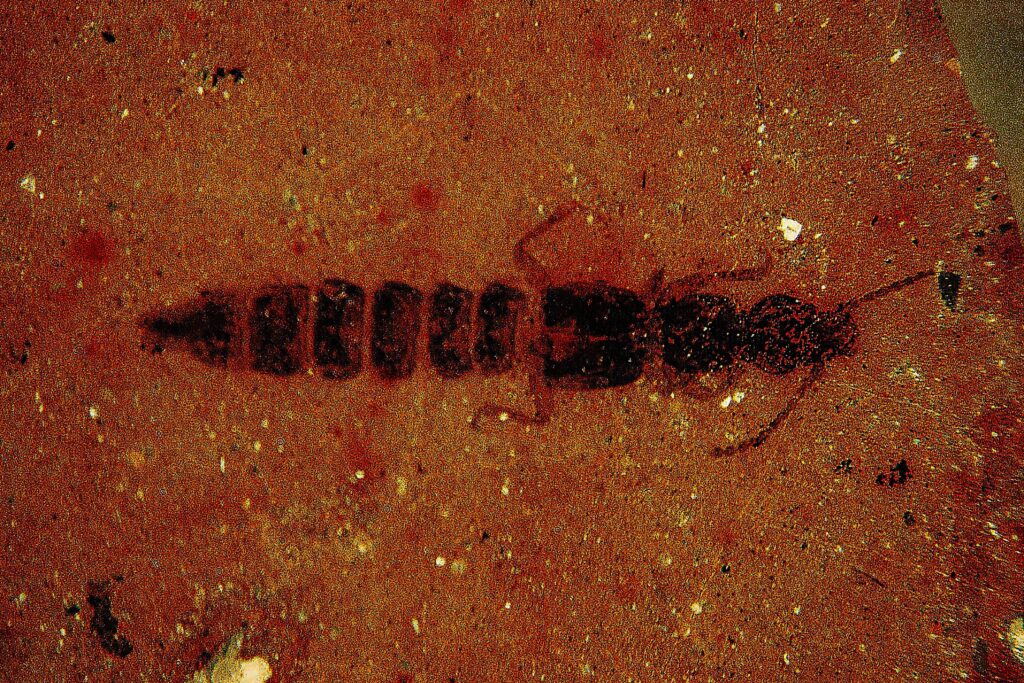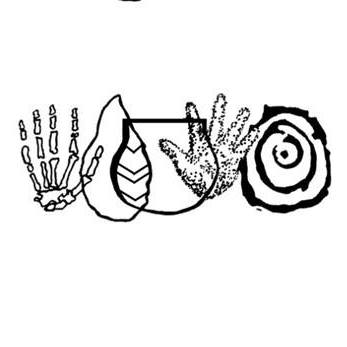Prehistoric killing machine exposed
The digital reconstruction of an Anteosaurus skull has shown that this large mammal-like reptile had attributes that would have made it an efficient predator.
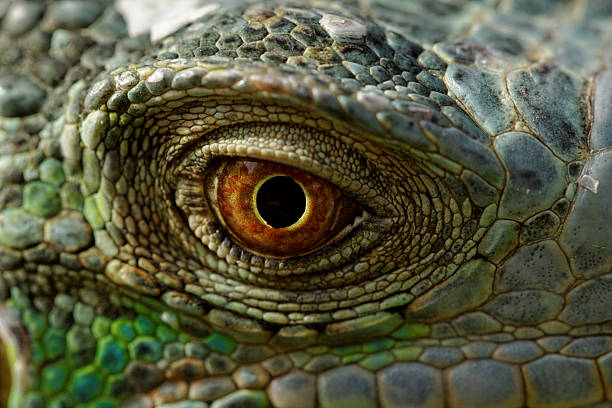
Small Bites
- Anteosaurus was so large scientists thought it ate carrion.
- Researchers reconstructed the most complete Anteosaurus skull through X-ray and 3D imaging.
- Parts of the brain that control balance and eye/head coordination pointed to Anteosaurus being the apex predator of its day.
A lumbering giant had a hidden past and a taste for flesh
Anteosaurus was no predator, its heavy tail and weighing the size of a hippo meant it didn’t have the body to chase down prey. Or so scientists thought until a team of researchers were able to peel back 260 million years and peer in a reconstructed Anteosaurus skull all with the help of X-ray imaging and 3D reconstruction. What they found was that this dinocephalian, a mammal-like reptile that pre-dated the dinosaurs, was able to not only outrun but track down and kill its prey efficiently. Previously it was thought that the lumbering Anteosaurus feasted on the leftovers of other predators. “Some scientists even suggested that Anteosaurus was so heavy that it could only have lived in water,” said Dr Julien Benoit of the Evolutionary Studies Institute (ESI) at the University of the Witwatersrand. At the ESI Benoit and his colleagues carefully reconstructed the Anteosaurus skull, using X-ray and 3D imaging. They were interested in the internal structures of the skull and soon realised that its brain and balance organs were developed more in line with that of a predator. The team discovered that the organ of balance in the Anteosaurus was large when compared to its closest relatives and the predators that were around at the time. It showed that Anteosaurus was able to move much faster than its prey and even its competitors. The team also found that the part of the brain that coordinates eye movement with the head was also large. This would have helped Anteosaurus hone in and track its prey. These attributes revealed in its skull would have made Anteosaurus nothing short of a mighty prehistoric killing machine, believes Benoit.
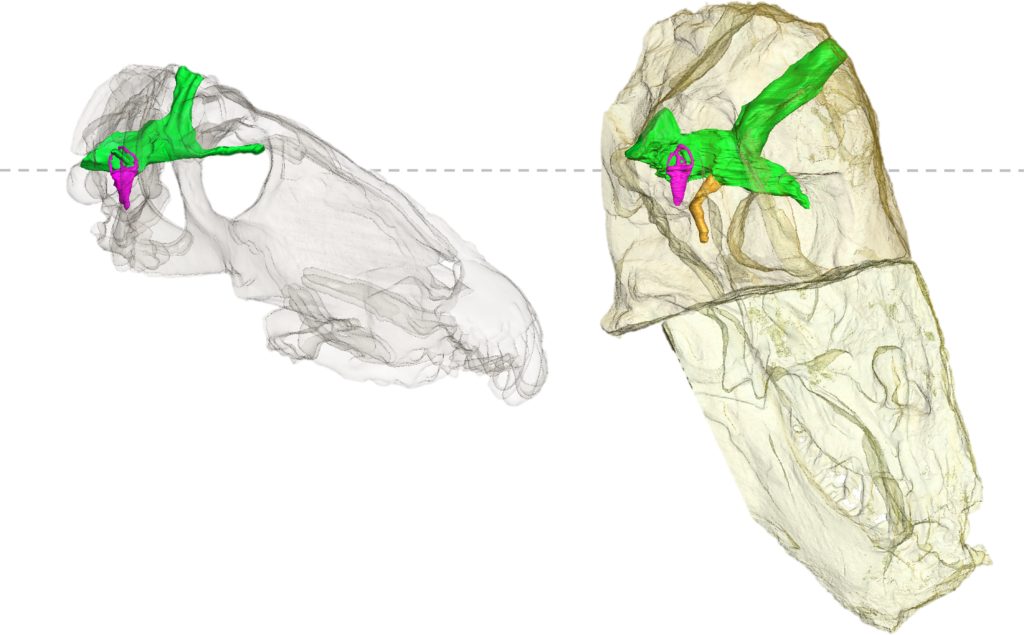
the differences in their brain cavities (green) and inner ear (purple).
In creating the most complete reconstruction of an Anteosaurus skull to date, we found that
Dr Ashley Kruger, The Natural History Museum in Stockholm, Sweden
overall, the nervous system of Anteosaurus was optimised and specialised for hunting swiftly and
striking fast, unlike what was previously believed.
